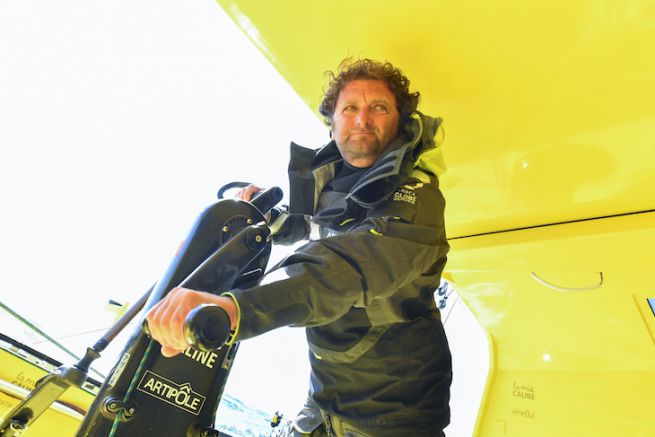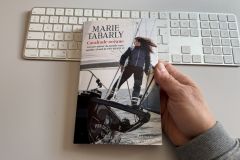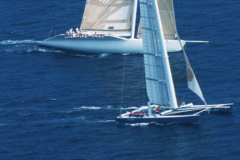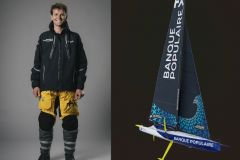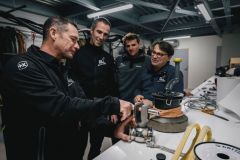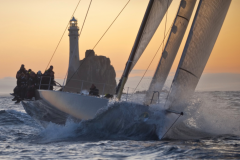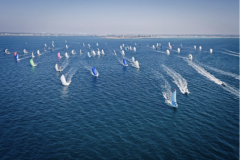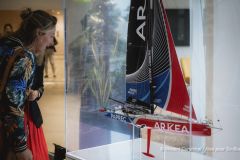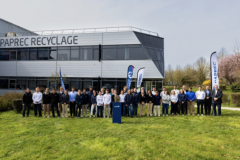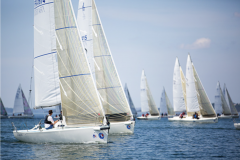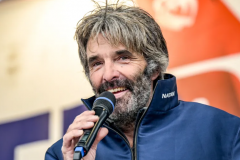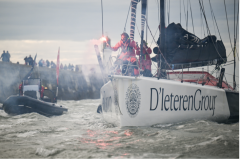Miles on the clock
Arnaud Boissières grew up in the Arcachon basin and started sailing very early with Yves Parlier on the 60-foot Aquitaine Innovation monohull. On board, he participates in three transatlantic races - in parallel with his two Mini seasons of 1999 and 2001
"In 1999, my Mini came back on a cargo ship, and I went on an IMOCA ferry."
He finally set up his own IMOCA project and took part in his first Transat Jacques Vabre - his first solo race - in 2007 on the IMOCA Akena Veranda. "It was the first Sodebo, launched in 1998. He was mythical."
In 2019, he took part in his 26th transatlantic race, took part in 3 Vendée Globe races and raced in all the races on the IMOCA circuit, such as the Route du Rhum or the Transat Anglaise.
"3 round the world voyages and 26 transatlantic races are not bad in the life of a sailor, but we must not stop there. I'm not at all at the end of my career and curriculum."
"Cali" as he is nicknamed in the industry, will start the next Vendée Globe in 2020 on his new IMOCA La Mie Câline Artipole . "The boat is linked to the project. For the 2016/2017 Vendée Globe, I had an old boat that I sold after the 2017 Transat Jacques Vabre to Manuel Cousin (Setin Group)."
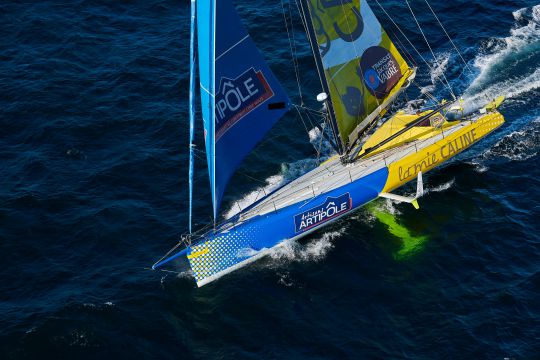
YVAN ZEDDA
An upgraded foil boat
It is therefore on board La Mie Câline - Artipole 2, bought from Michel Desjoyeaux in 2018, that the skipper from Vendée will take part in the Vendée Globe 2020. This old Owen Clark design was designed in 2007 for Mike Golding and built in New Zealand. Enda O'Coineen took part in the last edition of the Vendée Globe aboard before dismantling in New Zealand in 2017.
The boat has undergone a long refit in the racing stable off the coast of Mer Agitée - foils and lifting rudders - but also at CDK - mast base, interior ballast tanks fitting..
"I ran for a long time on my first boat and I had no budget to buy a new one. So I bought an old boat on which it was possible to adapt foils. It's a less extreme boat than some, a little like La Fabrique (editor's note: Alan Roura), but it allowed me to have a foiler while respecting my budget which didn't allow me to have a state-of-the-art boat."
If he cannot compete with the latest foilers, he can count on a reliable and robust boat, just like his project.
A fake debate
However, well aware of the difference that can exist within the IMOCA class, with heterogeneous projects, for him, the foil and non foil ranking does not have to exist.
"For me it's a false speech this ranking with foils or without foils. We must not forget that the boat that won the Route du Rhum 2018 is SMA of Paul Meilaht, a drift boat. And especially on deckchairs, IMOCAs with straight drifts work very well, because they act as load-bearing planes."
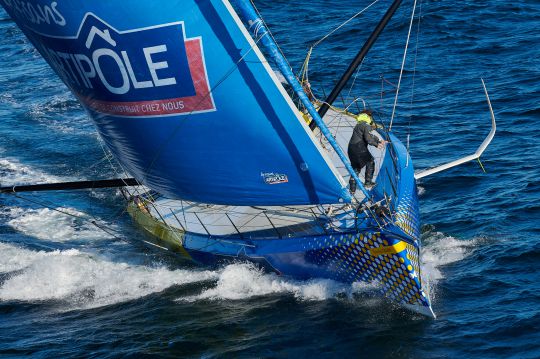
YVAN ZEDDA
Compete with the 2016 generation
With a boat that works very well downwind - "not like Charal for sure" - Arnaud ensures that he can compete with the IMOCAs of the 2016 generation. "It was revealed on the 2019 Azimuth Challenge, we did as well as Bureau Vallée or Newrest Matmut. That's pretty good. We finished at the 12 e place and we sailed in contact with Prysmian Group or V&B - Mayenne. On the other hand, the boat's major weakness is upwind, it's very difficult and we lost 6 places. It's frustrating, but you have to put it in perspective."
For on a Vendée Globe, sailing is mainly downwind, unlike the Transat Jacques Vabre, where close-hauled sailing takes precedence. "You have to sail differently and Xavier Macaire brought me this. We sailed upwind differently, to make less heading and we're making up for it downwind. We're in the positive attitude, he's a little like me about it and it's great."
Its main rivals are the IMOCAs of the same generation as its own. " I often fight with Alan Roura (LA Fabrique) or Stéphane Le Diraison (Time for Ocean). There are also boats that work very well with their straight daggerboards, such as Corum by Jean Le Cam and Nicolas Troussel. They are experienced sailors and they are formidable."
A class pulled upwards
If his project is not one of the most expensive, Arnaud is quite excited to be able to sail alongside all these new boats recently launched. "Jeremie Beyou was the first and worked hard for a year. Sébastien Simon is very talented and the boat is beautiful, but he is very young. I like Apivia very much too. These are the two most boats in the fleet. If I had to make a new boat one day, Apivia or Arkea would be models."
This emulation around the new boats is beneficial for the class, allowing diversity while remaining "quite homogeneous with a good unit."
"It pulls everyone up, sponsors, préparateurs, teams... The fleet is diversified and there are very beautiful projects with magnificent boats. But also medium projects and adventure projects for the Vendée Globe."
In this sense, all the boats - new and old - have evolved a lot this winter, like Apicil, IMOCA drifting from Damien Seguin. A choice that is not always easy for Arnaud, who is both skipper and company manager.
" Of course, having my own project, I would like to put more resources into it. I manage the whole project and I own my boat. As a skipper, I would like to prepare a work site for a set of foils. But I have to calm my temper. This is the richness of my project, but also its weakness. I tell myself that when a shipowner manages the boat, there are other problems. Finally, I see the glass half full."
In his project, Arnaud can count on the support of many partners, and his two title partners since 2016, La Mie Caline and Artipole.
This winter, his boat will enter the yard to improve and progress to the Transat New York - Les Sables, which will be the last run before the long-awaited round the world race.

Christophe Favreau
An IMOCA class in full expansion
"It's scary when you talk about numbers. There are many of us, and there is an extreme enthusiasm for the Vendée Globe with one year to go. Today it is a flagship class and we must take advantage of it".
On the Transat Jacques Vabre 2019, there were 30 pairs crossing the starting line. A record?! It must be said that with the new qualification and selection system for the Vendée Globe, we have to sail as much as possible. "It's not bad, skippers and boats will be more affected and it can only be beneficial."
Like many of his competitors, Arnaud has made his comeback from transatlantic solo and should be back in Les Sables-d'Olonne on Friday or Saturday.
"It's not a qualifier, but it allows you to sail and train. This return leg of the Jacques Vabre is similar to the return leg of the Vendée Globe and is not necessarily the most pleasant. So it's good to do it, to get tough."
For this return journey between November and December, Arnaud does not put pressure on himself. If the weather is complicated, a stopover in the Azores is even planned. "Once again, we sail and it proves that we push to make our boats and projects more reliable."
If his objective was to perform in the Transat Jacques Vabre - Arnaud and Xavier finished 18 e - the Vendée Globe never leaves his mind. "Every time I sail on the boat, I think of the Vendée Globe and I think not to overload it. The idea is to make it more efficient, to make it more reliable. With a year to go, it gives me confidence and he has real potential."
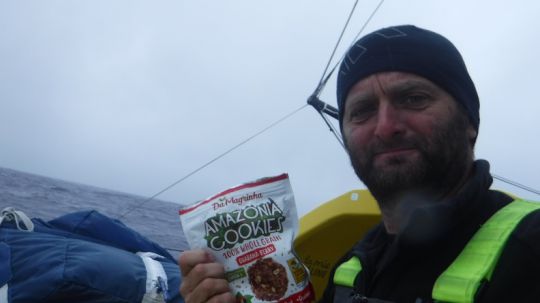
The rigour of the Figaro players
To prepare for his next big event, Arnaud called on Xavier Macaire for the Transat Jacques Vabre 2019. "He doesn't have much experience in IMOCA, but has done 9 seasons in Figaro. He is also very motivated and would like to participate in the Vendée Globe 2024."
By sailing in a Figaro on the Tour of Brittany with him, Arnaud was able to learn differently. "He put me on his little boat and it brought me rigour, precision... Xavier gives me advice on the sail lines, the polar of the boat, the routing. He does it extremely well and these little details and adjustments he teaches me make me a lot of money."
But "Cali" doesn't forget the human side of his teammate, an essential criterion. " I wouldn't go double with someone I don't get along with. Human exchange is important. He's a nice guy and I pay a lot of attention to him. Not everyone thinks like me, but when I sail, I don't go to the mine. I'm a southwestern guy and I like to talk nonsense, laugh. We do an extraordinary job and we have to put it in perspective. We can race offshore and remain humble."
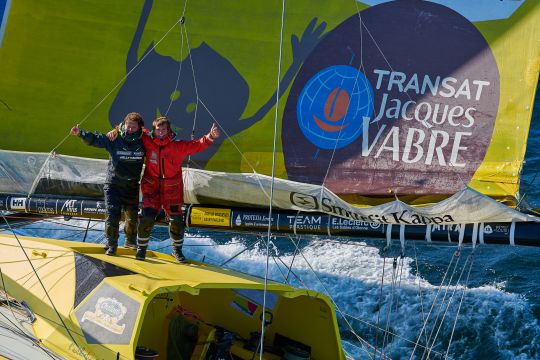
YVAN ZEDDA
